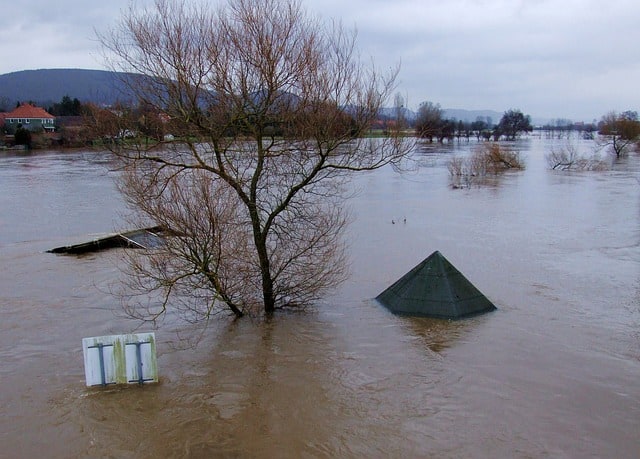“They tell me our building is going to flood! We need to get all the computers up off the floor!”
That’s what we heard at the end of December when one of our clients called in a panic. A St. Louis County Building Inspector cancelled the inspection of a neighboring property because “that area will soon be under two feet of water.” This dental office needed help immediately! Municipal officials and news agencies warned of historic flood levels for the Mississippi and Meramec rivers.
Long before this incident, the Army Corps of Engineers advised the dental office that their offices weren’t in a flood plain, but in late December 2015, Mother Nature decided differently. Fortunately, they had ignored the advice and purchased flood insurance anyway.
Though safeguarded with insurance, every wise business person knows time is money, and downtime without properly functioning computer systems leads to lost revenue.
This dental office is a Citadel-level Managed Tech Services client who found Anderson Technologies a calm and helpful presence in the midst of a holiday emergency. With the warning of possible flood waters, the client madly scrambled to elevate equipment off the floor – every server, workstation, uninterruptable power supply, network cable, etc. They called and Anderson Technologies answered immediately. “I’ll be there right away,” Principal Mark Anderson said and dropped what he was doing to arrive onsite as quickly as possible.
All of Anderson Technologies’ St. Louis-based Systems Administrators are calm under pressure, and while the situation was chaotic, Mark remained unruffled and methodical. “He quickly and competently jumped right in and helped us get all the computer equipment up as high as we could. We weren’t worried about functionality; we just wanted to save everything,” explained J.E., one of the principals. Mark made sure everything was shut down, disconnected properly, moved to “higher ground,” and could be easily re-installed after the danger passed.
Once the client’s equipment was secured, Mark assisted a neighbor in the same predicament. He found an orthodontics office doing all they could to protect against the threat of rising waters. They didn’t have flood insurance, and their IT support firm wasn’t local so they had no one to call for onsite assistance. Owner S.D. explained, “I’m completely paperless so everything in my business is on computers. That is how I survive. I never thought in a million years that this would be an issue; Mark was absolutely my knight in shining armor.”
Our team went right to work. Office Manager L.H. said, “You’re like a tech angel!” As this was the first time visiting the office, Mark took photos of all critical components and corresponding wiring before disconnecting them, documenting how everything was connected, and noting any customized wiring. “A little bit of foresight up front can save hours of frustration down the line,” Mark advised. Armed with these photos everything could be confidently and reliably re-installed without confusion.
As it turned out, the building was fortunately spared any flooding. S.D. talked about the process of putting everything back in place after the danger had passed and what it was like to work with Anderson Technologies throughout the whole ordeal. “Just by working with Mark on this one issue, it was clear to see that we have the same high standard of business ethics. We are so grateful to have found them!”
As a St. Louis-based computer expert, Anderson Technologies knows a thing or two about flooding. Computers and water don’t mix well together, and when flooding is predicted, business owners need to be aware of potential damage to their critical computer systems. If there is any chance you may find your business in this situation, here are a few tips to consider:
- Establish a well-thought-out and documented Disaster Recovery Plan
- In addition to local backups, backup your data to a remote, offsite location and thoroughly test restoring from it at least once per year
- Document your network and computer infrastructure configuration as completely as possible, including the names and emergency contact information for all critical vendors and business partners
- After safeguarding your equipment but prior to the flood, shut off power to the office to minimize damage due to power shorts
- Re-evaluate your needs and your plan once the danger has passed
If you have disaster recovery planning needs, please call us at 314.394.3001 to discuss this topic.




